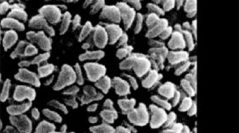

 Comptes Rendus Palevol
4 (1-2) - Pages 135-150
Comptes Rendus Palevol
4 (1-2) - Pages 135-150The para-taxon biorecord Superret- croton, characterized in 1979 by Hughes et al. in the Wessex sub-basin (England), is for the first time recognized in the Wealden facies sediments of Bernissart (Sainte-Barbe Formation, Mons Basin, Belgium). This morphotype demonstrates the presence of angiosperms. It is equivalent to the morphographic taxon Stellatopollis hughesii Penny, 1986. By using its stratigraphic distribution in the well-dated reference sections of the Weald and Wessex sub-basins (England), we suggest that the wealden facies sediments at 322 m deep in the natural pit of Bernissart are Middle Barremian to Earliest Aptian in age. This dating confirms the hypothetic Barremian age previously suggested on the basis of the morphologic evolution of the Iguanodontidae. It also clarifies the beginning of the subsidence in the Mons Basin, coeval with an eustatic drop (second order) and probably related to the dissolution of deep anhydrites.
Pollen, Angiosperms, Wealden facies, Iguanodon , Barremian, Aptian, Subsidence, Mons Basin, Bernissart, Belgium